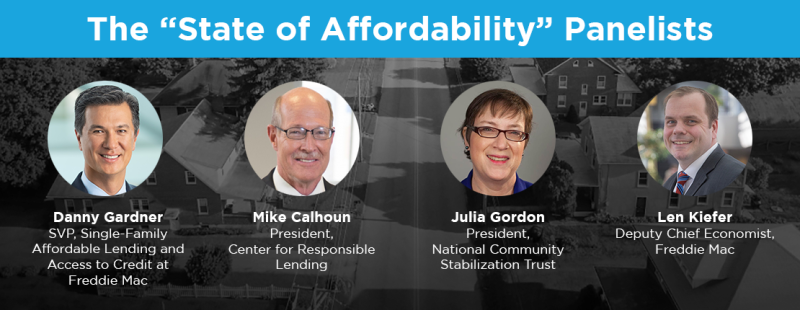4 Affordable Housing Obstacles to Overcome

Look at the housing affordability problem from every angle: home prices outpacing wages, growing student debt, rising rents, a lack of entry-level housing on the market and the lingering impact of the Great Recession. They’re all inhibiting the growth of homeownership, and only an industrywide effort can solve for them, according to a panel of experts who met recently to discuss affordability obstacles and potential solutions.

1. Home Price Appreciation Versus Wage Gains
The affordability crisis underscores a long-term macroeconomic trend occurring since the Great Recession: a persistent gap between rising home prices and slow income growth for most of the nation’s workforce, especially for millennials, who make up the bulk of first-time homebuyers.
“This group has really been hit hard because they came of age during the Great Recession, the effects of which are persistent and long lasting,” Kiefer said, “with research suggesting [millennials] will never over a lifetime match the income levels of [other generations].”
Calhoun pointed out that anemic wage gains—versus the lack of desire—is why fewer younger adults today are buying homes, saying, “it merely reflects the reality of their financial circumstances.”
Weak earning power has disproportionately driven up the demand for moderately priced homes, which has complicated the financing available to lower- to middle-income buyers, Gordon added.
“When you look at affordability, you are talking about prices tied to demand and supply, but also the cost of credit and the availability of credit,” Gordon explained.
With all the points the panelists raised, it’s clear that this problem is at the root of lower homeownership levels for millennials compared to previous generations.
2. Student Loans Hold Back Aspiring Homeowners
In addition to slow wage growth, the burden of student debt is holding back would-be buyers who can’t manage loan payments and set aside enough savings to put toward a home.
“Student debt has surged to $1.6 trillion from $300 billion in the last dozen years,” Calhoun said. New repayment plans are critical, he said, adding that, “student debt is the leading disqualifier for mortgage applicants.”
This financial burden is a barrier for all potential millennial homebuyers, but especially borrowers in underserved communities whose parents can’t help them to raise down payment cash, Gordon added.
3. Paying Rent and Saving for the Future
Another factor in the affordability equation is the high cost of renting, which undermines renters who are trying to build savings to buy a home.
For more than a decade, “rents are rising, maybe not as fast as home prices, but much faster than incomes,” Kiefer said. “This creates an enormous cost pressure for young adults.”
4. Rethinking the Homebuilding Business Strategy
New home construction, Kiefer said, is still based on a mass-production model of monoline units, mostly single-family homes priced to borrower costs on 30-year fixed loans.
“There is a need for loan products that drive down origination costs and to look at alternatives like factory built housing and rural housing,” he said. In response to this problem, the market has created low down payment loans allowing qualified borrowers to put as little as three percent down and more affordable mortgages for real-property factory-built homes
New housing stock must be built to meet the diverse needs of today’s buyers, versus just that of the traditional nuclear family, including homes designed for intergenerational living, Gordon explained. “The idea of different generations living in one home really made sense for many years in this country for households across the board.”

Industrywide Problem Solving and Signs of Progress
Rehabbing and preserving existing housing stock is one area on which the housing industry has collaborated more successfully, Gordon pointed out. A nationwide coalition of realtors, community housing organizations, policy advocates and lenders have made progress in restoring inventory in blighted neighborhoods and preventing deterioration of more housing stock.
“Neighborhood revitalization stabilizes families, lets them keep their kids in the same schools, and it’s an exponential positive multiplier for the local economies in these areas,” she said.
This push to upgrade aging inventory has led to energy efficiency improvement loans and renovation mortgages designed to cover the cost of home renovations.
Freddie Mac is All For HomeSM building home for the future through insights, education, mortgage products and business solutions.